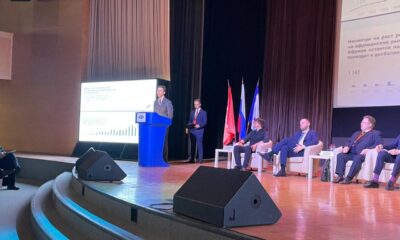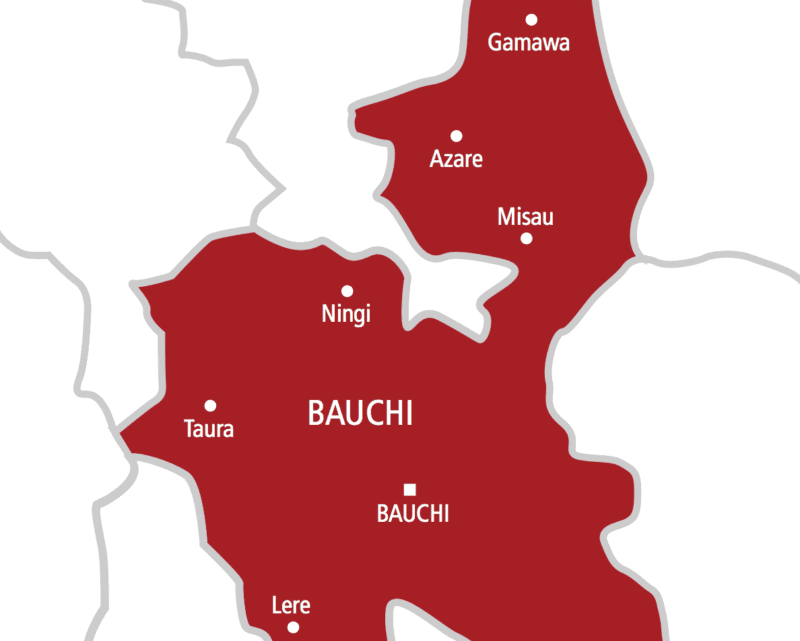Legal Issues
An Appraisal Of Triangular Employment Relationship Under Nigerian Law -By Oyetola Muyiwa Atoyebi & Jamilu Samaila
The most powerful protection available to employees in triangular employment is the Labour Act, which primarily deals with the relationship between employer and employee. However, it is pertinent to note that these Labour Law Act do not specifically make provision for the triangular employment model.

Introduction
Internationally, there has been a noticeable expansion in the scope of employer-employee relations, which has birthed new employment models, one of which is the Triangular Employment model. This model is rapidly becoming the preferred option amongst corporate organizations, which, very likely, is due to the fact that it saves organizations from dealing directly with employee issues and grievances, and instead focuses on and channels their energy towards customer satisfaction and amassing excess profits.[1]
The concept of triangular employment
Triangular employment refers to a situation wherein a person (the employee) is employed by a company (outsourcing organization) for the primary purpose of working for a third-party agency (contracting agency). Generally, in triangular employment, the outsourcing organization and the contracting agency have a service agreement that requires the outsourcing organization to supply the contracting agency with staff.[2]
The “triangular employment principle” can be credited to the International Labour Organization (ILO). Ordinarily, an employment relationship involves two parties: the employer and the employee. However, the ILO has acknowledged that there are situations in which three individuals or entities can be involved in employment relations, in what might be termed a “triangular employment relationship” or a “disguised or objectively ambiguous triangular employment relationship”.[3]
The legal basis of triangular employment under the Nigerian Law
The basis of triangular employment can be found in section 91(1) of the Nigerian Labour Act CAP L1 LFN 2004, which defines an ‘employer’ to mean:
“Any person who has entered into a contract of employment to employ any other person as a worker either for himself or for the service of any other person, and includes the agent, manager or factor of that first mentioned person and the personal representatives of a deceased employer”.[4]
The phrase “either for himself or for the service of any other person” gives expression to the fact that an employer of labour may employ a staff either for himself or for the service of another person. This puts Labour Contractors to fall within the meaning of an employer under section 91 of the Labour Act. A full panel of the National Industrial Court in the case of Petroleum and Natural Gas Senior Staff Association of Nigeria v. Mobil Producing Nig. Unlimited declared labour outsourcing as a legitimate and lawful enterprise. Recruiters however must obtain a Recruiter Licence issued by the National Electronic Labour Exchange (NELEX), an agency of the Federal Ministry of Labour[5].
The nature of triangular employment
Triangular employment, as the name implies, involves three parties: the original employer (i.e., the outsourcing organization), the contracting agency and the employee. The concept of triangular employment is hinged primarily on the principle of “secondment”. In a typical secondment arrangement, an employee would be assigned to another organization by his/her original employer, either temporarily or permanently. Plainly put, in this mode of employment, the user of an employee’s services is not the primary employer.[6]
Reasons for triangular employment
The triangular model of employment is most advantageous to the outsourcing organization and the contracting agency for the following reasons, to wit;[7]
- Some companies do not have an internal structure that provides for the human resources department, thus there is a need for contract staff/secondment of staff.
- The contracting agency can enjoy the services of the employee without being directly/wholly liable to the employee in a triangular employment.
- The outsourcing organization is only responsible for the supply of staff to the contracting agency.
- The outsourcing organization can deny liability for injury suffered by an employee in the course of working for a contracting agency.
- Both the outsourcing organization and the contracting agency can circumvent the law in respect of employee pension schemes, health insurance, compensation for injury etc.
- An employee cannot join trade unions in order to agitate for a change in bad working conditions.
Legal Issues arising from Triangular Employment
The legal issue that may arise on the part of the employer in this type of employment relationship is, who is the employer recognized by law. Is it the outsourcing agency or the end-user who controls the employee in the course of duty and also enjoys the privity of contract with the employee? On the part of the employee, the legal issues are: who is my employer? What are my rights? Who is responsible for ensuring my rights?[8]
To answer these questions is very important as the party adjudged to be the employer will have concomitant legal obligations to the employee in triangular employment. It is also crucial to all parties in the relationship as the answers will determine the obligations and rights of the respective parties towards the other.
The various factors often considered in resolving these issues are; does the end-user have a right to punish the employee (who in an actual sense is not his employee?) Who has the obligation to enrol the employee on statutory benefits like National Health Insurance Scheme, Employees Compensation, Pension Scheme, etc.?
Furthermore, the vague position of the employee’s real employer presents a technical difficulty as the employee may find himself interacting with two (or more) employers, each of whom assumes certain functions of a traditional employer. Unfortunately, the employee is the weakest party in this tripartite employment relationship and therefore does not have the bargaining strength to secure a fair deal by contract either from the outsourcing agency or the end-user.[9]
Nigeria’sposition on the concept of Triangular Employment
Even though, the Nigeria Labour Act has not dealt with the issue of triangular employment, this was because the drafters of the law did not envisage the evolution of triangular employment to be so complex. The position of the law before the advent of the concept of triangular employment is that a contract cannot confer rights or impose obligations upon any person who is not a party to the contract. Thus, in the event of any dispute arising from a triangular employment relationship, the employee can only maintain an action against the employment agency and not the end-user. This position is largely based on the principle of privity of contract.[10]
The National Industrial Court was called upon to determine the issue of triangular employment, the Court in deciding the nature of employment of the parties relied on the ILO Convention, and held that the determination of the existence of an employment relationship would be guided by the facts of what was actually agreed and performed by the parties, and not by the name the parties have given the contract.[11] In the case of Petroleum And Natural Gas Senior Staff Association V. Mobil Producing Nigeria Unlimited (Supra), the Court went further to state that, the question will be decided based on facts, irrespective of how the parties describe the relationship.
In the case of Stephen Ayaogo & Ors V. Mobil Producing Nigeria Unlimited & Anor, the Court held that the end-user is a co-employer with the outsourcing agency and would share in the liability of the outsourcing agency.[12]
It should be noted that the doctrine of privity of contract is a general principle of contract which is not absolute and admits certain exceptions because the court will carry out “…enquiry into the merits of the case to reveal the true position of things…”
Flowing from the decisions of the NIC, the question that comes to mind is; in what instance would the Courts be willing to hold that the end-user is also liable to the employee for obligations required of an employer? In answering this question, the courts will look at the implementation of the employment relationship based on the facts and circumstances of the case to establish whether the triangular employment relationship is in fact a sham arrangement merely for the purpose of avoiding liability as an employer. The Courts have held that what will constitute a sham would be determined on a case-by-case basis. For instance, where the termination of a contract of employment of an employee by a company (employer) is on the instruction of the end-user, both companies may be held to be co-employers for the recourse of the employee. It has also been held that where the employer can be construed as an agent of the end-user, the two would be treated as one. Thus, where there is evidence of major control or involvement by the end-user in the affairs of the employee, it will be construed that the triangular employment is a sham.[13] Evidence of control may be gleaned from the following:
- Recruitment: Is there proof of significant participation in the recruitment of the employee? Does the final decision rest with the end-user?
- Supervision and Direction: Does the end-user conduct appraisals, set yearly objectives, and give directives to the employee including setting the terms for remuneration, benefits, and holidays, amongst others?
- Discipline: Does the end-user provide disciplinary measures and carry the same out without recourse to the outsourcing agency?
- Termination: Is the end-user on his own, absolutely responsible for the termination of employment of the employee?
The answers to the questions posed above will provide an indication, as to the measure of control the end-user wields over the employee.
Conclusion
The most powerful protection available to employees in triangular employment is the Labour Act, which primarily deals with the relationship between employer and employee. However, it is pertinent to note that these Labour Law Act do not specifically make provision for the triangular employment model. Hence, parties in triangular employment must fall back on the contract between them for protection. It is, therefore, advisable that the employee in triangular employment must diligently read and seek proper advice on the employment contract before committing to same; as the Court will interpret the terms of the triangular contract in deciding the rights and protections available to an employee under same.[14]
AUTHOR: Oyetola Muyiwa Atoyebi, SAN, FCIArb. (UK).
Mr. Oyetola Muyiwa Atoyebi, SAN is the Managing Partner of O. M. Atoyebi, S.A.N & Partners (OMAPLEX Law Firm) where he doubles as the Team Lead of the Firm’s Emerging Areas of Law Practice.
Mr. Atoyebi has expertise in Corporate and Commercial Law and this has seen him advise and represent his vast clientele in a myriad of high level transactions. He holds the honour of being the youngest lawyer in Nigeria’s history to be conferred with the rank of a Senior Advocate of Nigeria.
He can be reached at atoyebi@omaplex.com.ng
CONTRIBUTOR: Jamilu Samaila.
Jamilu is a team lead in the Corporate and Commercial Team at OMAPLEX Law Firm. He also holds commendable legal expertise in Employment and Labour Law.
He can be reached at jamilu.samaila@omaplex.com.ng.
[1]https://www.aaachambers.com/articles/a-critical-analysis-of-triangular-employment/#:~:text=Triangular%20employment%2C%20as%20the%20name,the%20principle%20of%20%E2%80%9Csecondment%E2%80%9D.<accessed on 20th June, 2022>
[2]Ibid
[3]https://www.patrelipartners.com/triangular-employment-relationships/<accessed on20th June, 2022>
[4]Nigerian Labour Act CAP L1 LFN 2004, S. 91(1)
[5](2013) 32 NLLR (Pt. 92).
[6]https://www.aaachambers.com/articles/a-critical-analysis-of-triangular-employment/#:~:text=Triangular%20employment%2C%20as%20the%20name,the%20principle%20of%2< accessed on20th June, 2022>
[7] ibid
[8]https://www.patrelipartners.com/triangular-employment-relationships/<accessed on 20thJune, 2022>
[9] Ibid
[10]https://www.patrelipartners.com/triangular-employment-relationships/<accessed on 20th June, 2022>
[11](2013) 32 NLLR (Pt. 92).
[12](2013) 30 NLLR (Pt. 85) 121
[13]https://www.patrelipartners.com/triangular-employment-relationships/<accessed on 20th June,2022>
[14]https://www.manifieldsolicitors.com/2019/02/05/triangular-employment-in-nigerias-labour-industry/<accessed on 20th June, 2022>



















